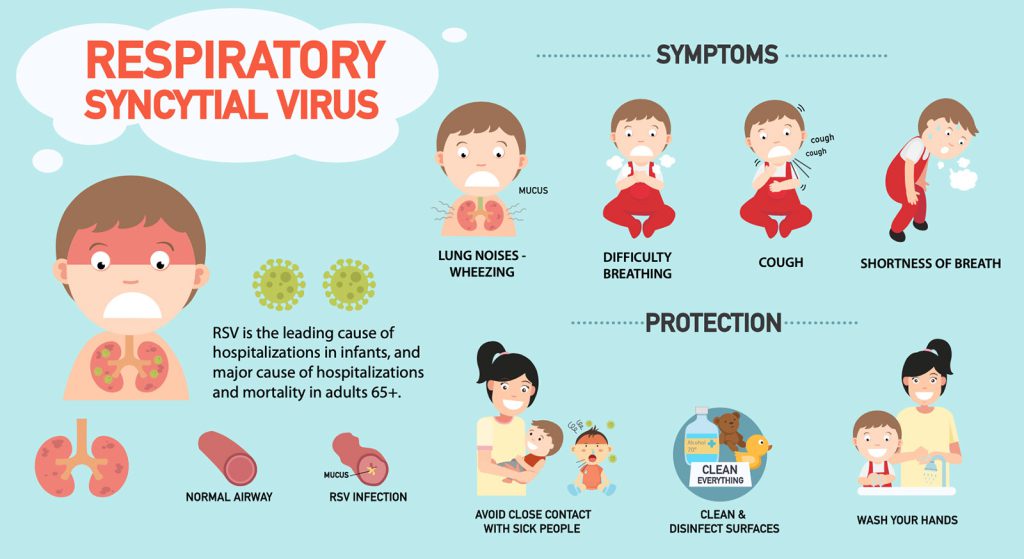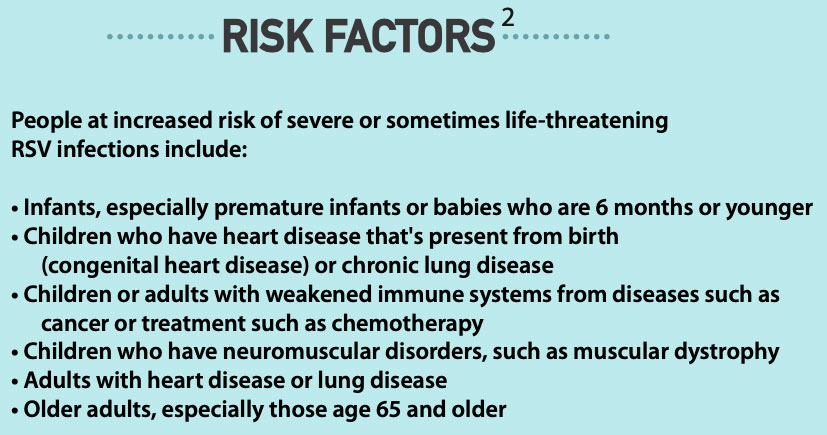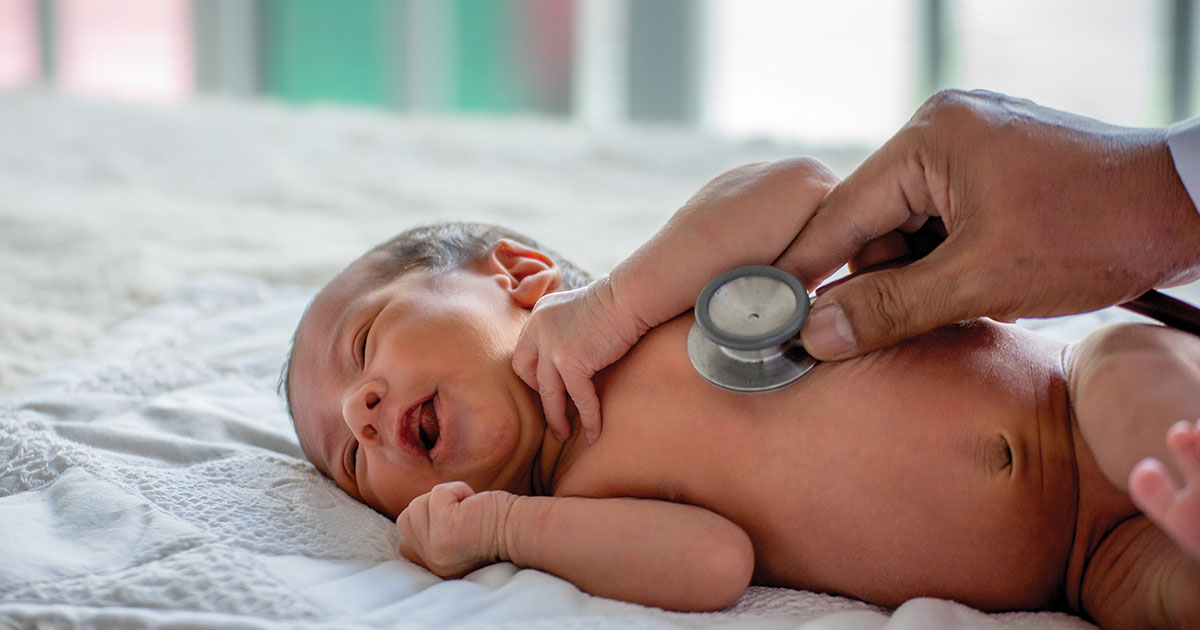RSV is the leading cause of hospitalization in infants. Each year in the United States, RSV is estimated to cause approximately 58,000 hospitalizations among children younger than age 5 years. RSV is also a major cause of hospitalization and mortality for adults ages 65+, leading to an estimated 77,000 hospitalizations and 14,000 deaths annually in the United States.3 Most people recover in a week or two, but RSV can be serious, especially for infants and older adults.1
What is RSV?
RSV is a common respiratory virus that often results in mild, cold-like symptoms, but can lead to serious illness. It often mimics the common cold virus. RSV infects the nose, throat, lungs, and breathing passages and is spread through contact with an infected person, or by touching contaminated surfaces and then touching your eyes, nose, or mouth. RSV typically circulates with other seasonal respiratory viruses, and it can be hard to tell the difference between RSV, COVID-19, and flu. In addition to lung infections (pneumonia and bronchiolitis) in young children and infants, severe RSV can lead to congestive heart failure, hospitalization, or even death.3 Laboratory and imaging tests aren’t usually needed for a diagnosis of RSV, however RSV infection can be confirmed by a swab of secretions from inside the mouth or nose.2

Symptoms of RSV
Nearly all children will have an RSV infection before their 2nd birthday but RSV can affect people of all ages. Most people infected are contagious for 3 to 8 days with mild symptoms, which may include: coughing, sneezing, runny nose, and fever.3 Other symptoms experienced include: congestion, sore throat, and headache. Severe cases may lead to severe cough, wheezing, rapid breathing, difficulty breathing, and developing a bluish color of the skin due to lack of oxygen.2
Certain groups are at greater risk for RSV-related complications, including: premature infants and infants age 6 months and younger, individuals with chronic heart or lung disease, individuals with compromised immune systems, and older adults (65+). However, the risk of severe complications exists across the lifespan, even in otherwise healthy individuals.3 Signs and symptoms of respiratory syncytial virus infection most commonly appear about four to six days after exposure to the virus. In adults and older children, RSV usually causes mild cold-like signs and symptoms.2

Treatment of RSV
Supportive care and comfort treatment measures recommend over-the-counter medication such as acetaminophen (Tylenol, others) to reduce fever. Aspirin should never be given to children. Plenty of fluids should be offered and individuals should be monitored for dehydration, including dry mouth, little to no urine output, sunken eyes, and extreme fussiness or sleepiness. Use of nasal saline drops and suctioning may help clear a stuffy nose. If symptoms worsen and your healthcare provider suspects a bacterial complication, such as pneumonia or middle ear infection, an antibiotic may be prescribed.
Self-care measures are usually all that is needed to relieve any discomfort. Individuals should seek immediate medical attention if you or your child – or anyone at risk of severe RSV infection – has difficulty breathing, a high fever, or a blue color to the skin, particularly on the lips and in the nail beds.2
How to Prevent RSV
Scientists are currently working hard to develop a vaccine, but currently no vaccine exists for prevention of respiratory syncytial virus.1 There are actions you can take now to help prevent RSV:1,3
- Wash your hands often – for at least 20 seconds using soap and water
- Clean frequently touched surfaces
- Avoid close contact with others who may be sick and stay home when you are sick
- Cover coughs and sneezes and keep your hands off your face

©2023HealthSpot References: (1) CDC (2022). Respiratory syncytial virus (RSV). Retrieved on December 28, 2022 from https://www.cdc.gov/rsv/index.html. (2) Mayo Clinic (2022). Respiratory syncytial virus – RSV. Retrieved on December 28, 2022 from https://www.mayoclinic.org/diseases-conditions/respiratory-syncytial-virus/symptoms-causes/syc-20353098. (3) National Foundation for Infectious Disease (2022). RSV. Retrieved on December 28, 2022 from www.nifd.org/rsv.

